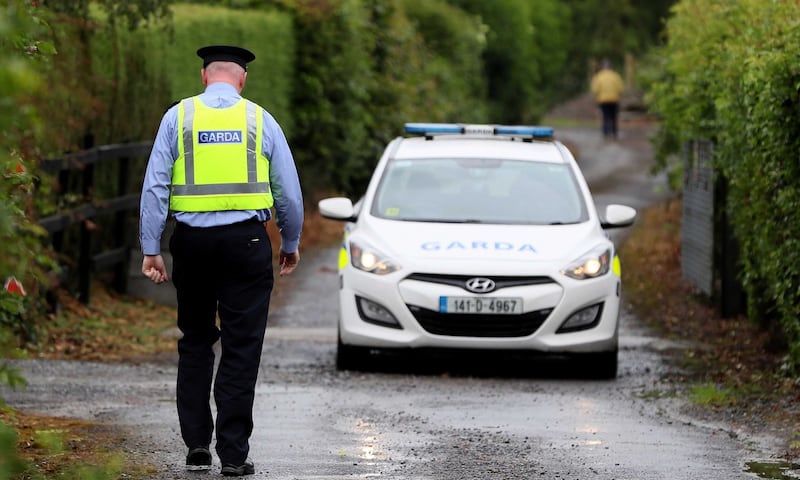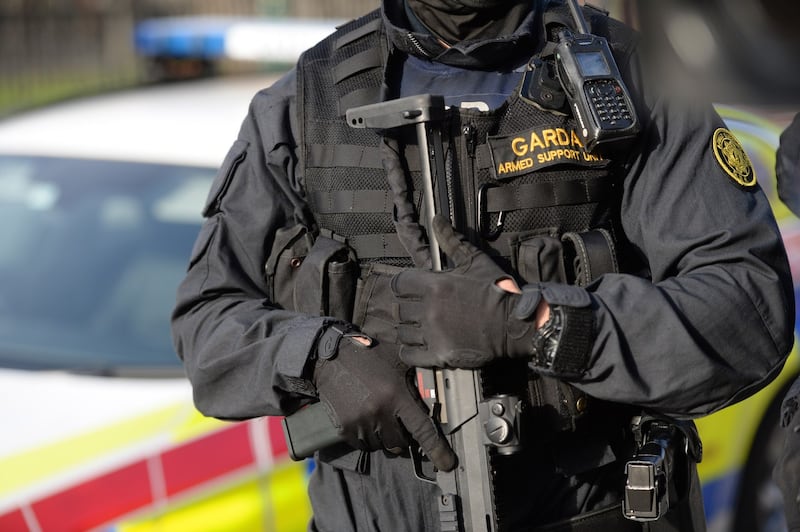"The Garda Síochána will succeed not by force of arms or numbers, but on their moral authority as servants of the people."
Those were the words spoken by Michael Staines, the first Garda commissioner, almost 100 years ago. It was a sentiment Irish people, bruised by the Civil War, were proud of; unlike the recently abolished RIC, the Garda would police by consent not coercion. But the truth is a little more complicated.
According to Conor Brady, a historian of the Garda and a former Garda Ombudsman Commissioner, as well as a former Irish Times editor, the original garda was a fully armed force.
But the then new government feared an insurrection from the police rank and file, which was mainly made up of former IRA men. Many of these were resentful of the more senior jobs on the force going to old RIC men.
Rather than having an armed group of potential mutineers, a decision was made to disarm the nascent police force.
Staines’ replacement as commissioner, Eoin O’Duffy, had to trick the gardaí into giving up their arms. “He said we’re moving to a new training centre, we’re all going in lorries in the morning and your weapons will be taken separately,” Brady says. “They never saw their weapons again.”
Rebranding this disarmament as a positive “was a wonderful piece of spin,” Brady says. “And it’s still doing the job today.”
Regardless of the reasons, setting up an unarmed force in the immediate aftermath of a civil war was an undeniable achievement. Today, Ireland remains one of only 18 nations with an unarmed police force.

But the word “unarmed” has always hidden a great deal of nuance. A massive expansion in the number of armed gardaí occurred at the start of the 1980s when a decision was made to arm all detectives. Previously only Special Branch carried guns.
One of the catalysts for this was a bank robbery in Stillorgan, Dublin where unarmed detectives, on coming face-to-face with armed raiders, had to point their fingers at them in the hope that it would look like they were holding pistols.
By the middle of the decade, some 30 per cent of gardaí had access to guns. Much of this occurred under the direction of the deputy commissioner Joe Ainsworth. Known as "Two Gun Joe" due to his habit of carrying a pistol in his holster and one on his ankle, Ainsworth was responsible for establishing the Garda's first specialised firearms units – the precursors of today's Emergency Response Unit (ERU) – and Armed Support Units (ASU).
The number of armed members later dropped following an internal review and, by 2004, just 13 per cent were armed, with plans outlined to reduce this figure further.
Withdrawals
However, as organised crime and subversive activity continued to pose a threat to the State, the number instead increased to almost record levels. Figures revealed in The Irish Times show that by 2019, 27 per cent of gardaí held firearms authorisation, many of whom held desk jobs and or had little dealings with violent crime.
This increase was driven by the expansion of the ASUs as well as the appointment of increasing numbers of gardaí as detectives. Since 2016, the number of detectives has increased by 34 per cent, a figure which far outstrips the growth rate of the force in general.
Last year, another review was carried out and another process of disarmament was initiated. This process is currently ongoing and, so far, about 1,000 firearm authorisations have been withdrawn.
The arming of more gardaí is typically welcomed by politicians and the public, often with little to no debate about how that conflicts with having an ostensibly unarmed police force.
It is extremely difficult to get figures on garda firearm use. “The specific details of the number of firearm card holders is operationally sensitive and is not being disclosed for security reasons,” was the reply from Garda headquarters to a query from this newspaper in May. Freedom of Information (FoI) requests and even parliamentary questions from TDs usually get the same answer.
The Irish Times could only obtain figures on garda shootings from the Garda Síochána Ombudsman Commission (Gsoc), to whom the force is obliged to report such incidents. It is only recently that the Garda started publishing limited data on its use of force in its monthly reports to the Policing Authority.
Reform and inquiries
The disarming programme currently underway will see less reliance on detectives to respond to incidents involving a threat to life, and more on regional ASUs. These units are highly trained and, as well as modern guns, also have access to a wide range of other devices such as Tasers and stun grenades.
Such devices have become increasingly important in an Ireland where the main danger gardaí face is arguably not bank robbers or gangland criminals but that posed by a severely mentally ill person brandishing a weapon while barricaded in a house.
The Garda deal with about 100 such incidents a year, most of which receive no public attention. At the start of the 2010s, the number was about 50 a year.
In the past, such people might have been injured by a garda or member of the public before maybe being shot.

This was what happened to John Carthy in Abbeylara, Co Longford in April 2000. Carthy, who was mentally ill, barricaded himself in a house for 25 hours before emerging carrying a shotgun. He was shot dead by the ERU in circumstances which lead to several inquiries and reform of the way gardaí dealt with barricade incidents.
Today, barricade situations are more likely to end in arrest following the use of a stun grenade or a Taser.
Another device growing in popularity is the 40mm launcher, a weapon that fires a sponge-tipped projectile which compresses on impact.
Mobile phone footage from a recent incident involving a man with an axe-like weapon shows its utility. An ASU member fires the weapon at the man, while a colleague covers him with a pistol.
The suspect then drops the axe and tries to run past gardaí before being tackled and arrested.
Costs
Arming and training large numbers of gardaí is not cheap. Figures obtained through FoI show that since 2016, the force spent almost €1 million on travel and subsistence costs alone for gardaí undertaking firearms training. Between 2016 and 2018 it spent more than €6 million on weapons and ammunition.
Time spent training is also time spent away from frontline policing. Detectives have to complete three firearms training sessions a year to keep their qualifications. In 2018, the Garda Inspectorate found 63 per cent of all training in the Garda College was devoted to firearms, which it noted was “exceptionally high for an unarmed police service”.
A reduction in the number of armed members will also free-up space for more advanced tactical training for members who need to carry weapons, says Chief Superintendent Brian Sutton of the Special Tactics and Operations Command (STOC). There will be four levels of firearms training under the new model, ranging from Level 1 basic training to Level 4 training for the elite ERU.

But the notion of a completely unarmed force except for specialist units is still some way off. By now, the Garda was supposed to have almost 400 ASU members, based in 13 centres, which could provide 24/7 armed cover for the whole country. But a pause in recruitment due to the coronavirus pandemic means this goal remains unmet.
This means, for the moment at least, there is still a need for some ordinary detectives to be armed.
Further disarming of the Garda is likely to face opposition from some gardaí themselves, especially those stationed in isolated regions or along the Border.
Gardaí, armed and unarmed, who spoke to The Irish Times, expressed discomfort about a wider programme of disarming detectives in light of the large number of illegal weapons on Irish streets. Some also lamented the withdrawal of the Uzi submachine gun from detective units some years ago. This imposing-looking automatic weapon was valued by gardaí as an extra level of protection and deterrence particularly in isolated Border areas.
For their part, civil liberties campaigners want to see more data on how and where armed force is used. Doireann Ansbro, a senior policy officer with the Irish Council of Civil Liberties (ICCL), says the number of gardaí carrying weapons is a source of concern for her organisation, as is the stationing of armed gardaí at Covid-19 checkpoints.
“While this surprised many people, the presence of guns at checkpoints has been a regular feature of policing in inner-city Dublin and other areas for several years,” she says.
“While the use of firearms may be necessary in certain, limited police operations, there must be far greater transparency about those circumstances. We also need further clarity about the extent to which firearms are currently used across Irish policing, the protocols and rules around their use and carriage, and how this has changed over time.”
Only then, she says, can Ireland have a true debate on what it means to have an unarmed police force.













